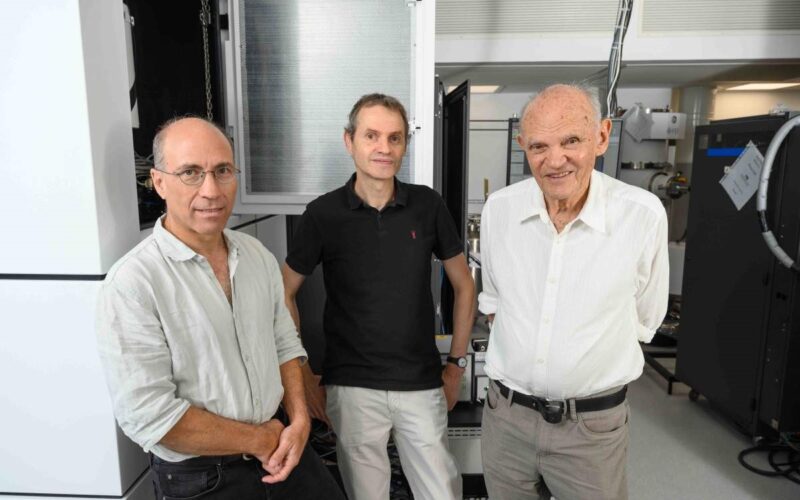
February 22, 2023
NASA will launch Israel’s first space telescope – the Ultraviolet Transient Astronomy Satellite, or ULTRASAT – into high-Earth orbit in early 2026, as part of a newly signed partnership between United States’ NASA and Israel’s Ministry of Innovation, Science and Technology.
ULTRASAT, a premier project of the Israel Space Agency in the Ministry of Innovation, Science and Technology and the Weizmann Institute of Science, is expected to revolutionize scientists’ ability to detect and analyse transient events in the universe, such as neutron star mergers and supernova explosions.
According to the agreement signed between NASA and ISA, NASA entered as a partner in ULTRASAT and will provide the launch opportunity, Flight Payload Adapter, and other launch related responsibilities for ULTRASAT. NASA will also have a partnership in the ULTRASAT Science program. ISA will deliver the completed observatory to the Kennedy Space Center, for launch. The observatory will eventually reside in a Geostationary Orbit after launch.
ULTRASAT’s unprecedented field of view of 204 square degrees represents a 100-fold leap in the extra-galactic volume accessible to scientists for the discovery of transient sources, compared to observatories on Earth. Moreover, ULTRASAT will measure ultraviolet light that cannot be measured from Earth, and provide the scientific community with real-time alerts on transient events.
The combination of these unique capabilities will allow scientists to observe the universe as never before, shedding light on some basic questions, such as the origin of heavy elements in nature and the impact of giant black holes on their environments. It will enhance research on a wide variety of astronomical subjects, including supernovae, variable and flare stars, active galaxies, the source of gravitational waves and accretion of stars by massive back holes.
“Groundbreaking science calls for cutting-edge technology. Our requirements from ULTRASAT, such as a wide field of view, advanced ultraviolet sensitivity and real-time data control and transfer are at the forefront of technological developments. Israel’s space industry can deliver these capabilities,” said Uri Oron, Director of the Israel Space Agency in the Ministry of Innovation, Science and Technology.
“The Israel Space Agency is proud of the cooperation with NASA as a direct example of the strong partnership between the agencies, and of the Israeli space industry’s technological effort involved in the development of the telescope.”
Dr Mark Clampin, Director of NASA Headquarters Astrophysics Division, also said: “We are proud to join this partnership, an international effort that will help us better understand the mysteries of the hot, transient universe. ULTRASAT will give the global science community another important capability for making new observations in the nascent field of Time Domain and Multi-Messenger astrophysics programs.”
According to Professor Eli Waxman, an astrophysicist at the Weizmann Institute of Science and ULTRASAT’s head researcher, this is a breakthrough project that places Israel at the forefront of global research.
“Leading international bodies such as NASA and the DESY research institute have joined this Israeli-led project as partners, having recognized its scientific significance. They are investing considerable resources in the construction and launch of the satellite to become active participants in this mission with access to its scientific products. It’s a science-driven partnership.”
The Israel Aerospace Industries’ MBT Space Division is building the satellite and will oversee the mission in space, as well as the incorporation of the telescope, built by Elbit Systems Electro-Optics – Elop. DESY is building the telescope’s camera, which features specialized detectors developed for the mission by Tower Semiconductor.
ULTRASAT is expected to have a wide-ranging impact, beyond its scientific discoveries. The mission’s success will demonstrate the feasibility of making scientific breakthroughs using small and relatively affordable satellites (approximately $90 million, for the spacecraft and instrument) and will pave the way to Israel’s future space initiatives.
The mission’s high scientific profile will strengthen Israel’s space industry and Israel’s status in the international arena thanks to the partnerships that the mission cements with leading agencies and industries in the field.
https://www.youtube.com/watch?v=xT2xbzvHC24

The ULTRASAT Research team (l-r): Prof. Eran Ofek, Dr Sagi Ben-Ami, Professor Eli Waxman, Professor Avishay Gal-Yam and Dr Yossi Shvartzvald

The NASA executive delegation meets with the ULTRASAT team at the Weizmann Institute of Science, January 2023

ULTRASAT






